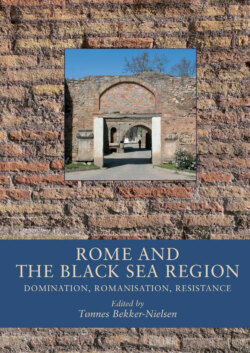Читать книгу Rome and the Black Sea Region - Группа авторов - Страница 10
На сайте Литреса книга снята с продажи.
From Kingdom to Province: Reshaping Pontos after the Fall of Mithridates VI
ОглавлениеJakob Munk Højte
After the final collapse of the Pontic forces and the flight of Mithridates VI in 66 BC, Pompey was faced with the problem of reorganizing the former dominion of Mithridates. This was no easy task since much of the territory, particularly the interior of Asia Minor, differed significantly in respect to its organisation and infrastructure from most of the other areas incorporated into the provincial system in the Greek East. Only along the coast could the Roman administration build on already existing polis structures. As a result, Pompey only joined a manageable portion of the western part of the Asian domains of Mithridates with Bithynia to form the new province, and the rest he parcelled out to client kings. The difficulty of this operation is attested by the fact that nearly a century and a half would pass before the remaining part of Pontos was brought under direct Roman control. Some of the cities founded by Pompey to create a continuum of urban territories later dwindled and disappeared under the rule of the local dynasts who had been installed by Caesar and Marcus Antonius, and who showed little interest in supporting an urban culture; these cities had to be refounded later.
The long and very complex historical process of transforming the territory of the Pontic Kingdom into the Roman provinces of Bithynia and Pontos, Galatia and Cappadocia in their more or less final form in the later first century AD has been treated thoroughly by Syme, Magie, Jones, Mitchell, Marek and others, and will only be dealt with in passing.1
Instead, I intend to look more closely at some of the archaeologically visible changes that occur during the Roman period on a somewhat smaller scale. First, I will undertake an examination of settlement patterns – made possible thanks to two recent survey projects – then investigate the use of eras and the reckoning of time, and finally look at what dated inscriptions can reveal about the chronology of changes in epigraphic habits and the use of personal names in northern Asia Minor, changes which may all be associated with the effects of Romanisation.
